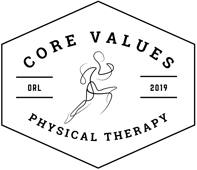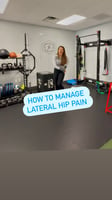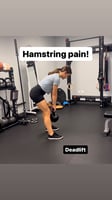Calf strains: The calf complex is the considered to be incredibly important for distance runners. Also known as the Triceps surae, the calf complex is made up of the medial and lateral heads of the gastrocnemius and the soleus muscle. Medial head has been shown to the the most significant contributor to plantarflexion and the most active portion of the calf complex during running. It is not surprising that it is a common injury that can side-line runners for weeks, months or even years.
There are different types of pain and impacts that pain can have on a runner and the way to manage that runner will vary based on where they are along this spectrum. A runner can experience acute and sharp pain that can cause the runner to have pain with running and even impaired walking as well as impact their activities of daily living. Or a runner can experience a more subtle and persistent nagging pain. Some runners can continue to run through this and have no impact on their activities of daily living. This scenario can result from overload, muscle fatigue, weakness and/or a combination of these.
No matter where you are along this injury/pain spectrum most often there needs to be a change in the load on the calf complex for some time with some training modifications. First we need to offload the irritated and sensitive tissue, then we need to gradually load the tissue back up so it is stronger and more resilient in the future. When there is an injury to the calf complex we often need to modify training to reduce load on the injured tissue while simultaneously finding the right time and dosage to load the tissue back up to promote healing.
Running mechanics, shoe changes and training errors are most commonly contributing factors to CMC injuries and increasing the strength of the calf complex can assist in improving the load tolerance of that tissue and reduce risk for injury.
The medial head of the gastroc is commonly injured in runners so here is a nice way to train that gastrocnemius back up and slowly progress the exercises to increase the load tolerance of the calf.
The exact progression of exercises and return to running must be individualized to each person. Tissues respond positively to moderate progressive loads so increasing that tissue tolerance is a must.
As you are in the acute phase the first few exercises will be appropriate:
Isometrics: Can be analgesic can slow muscle atrophy and reduce any swelling. Restore normal muscle recruitment improve contractility, endurance and load tolerance. 5 reps of 30-45 second holds, start with two legs and progress to one.
When there is still some discomfort and weakness start with double leg heel raises to keep the muscle moving, promote blood flow, add some tension and improve healing
Double leg heel raises: includes the contraction and relaxation phase and the muscle complex moves through a greater range of motion. Goal is to perform 3 sets of 8-12 reps with good control.
Double leg heel raises with weight: Progress as tolerated to add increase load.
Subacute and progressive loading phase:
Tissue sensitivity has decreased and the tissue is ready for progressive loading to increase tolerance and reverse pathological tissue changes
Progress to single leg heel raises and again add weight as tolerated
In the later stages of rehab plyometric activities need to be reintroduced to ensure that the injured runner is tolerant to the loads and movements similar to the loads and movements experienced while running.
A safe and gentle way to reintroduce plyometrics is to start with the beginner hops without actually leaving the ground. This allows for the stretch shortening cycle to be introduced to the calf but at a lower load. Goal is to perform 4 set of 20 seconds.
As the runner gets stronger and more confident they can start to play around with leaving the ground and progress to full double leg hopping at various heights
Goal: progress to 60 seconds hopping on both legs, add in side to side and forward/backwards hopping to challenge the frontal and sagittal planes.
Once the runner can tolerate these you can progress to single leg hopping. Single leg hopping can be performed in once spot to start and then progressed to forward/backwards and side-to-side to work into the frontal and transverse planes.
At a certain point the runner will also be able to gradually reintroduce running. This can be done with a run/walk style of programming and will be specific to that individual and modified as needed.
Check out these exercise videos on Instagram or by clicking the link here
Are you an injured runner and aren’t sure how to get back after an injury? Stop guessing and let’s assess. Schedule your free talk with a doc, Dr. Rebecca Smith, PT, DPT, today by clicking the link HERE or clicking the button below.
Rebecca@corevaluesptorlando.com 📧
corevaluesptorlando.com 👨💻
407-476-6613 📱
🔹
Core Values Physical Therapy: Empowering athletes and active adults to take ownership of their health and invest in the future of their bodies
😣🔜🤗
The Core Values 3 step process:
1. Calm the injury down
2. Find the specific cause that is contributing to your problem
3. Build you back up and teach you how to prevent it from coming back
‼️ This is not medical advise and is for educational purposes only. This is not intended to diagnose or treat. Please perform at your own risk‼️



